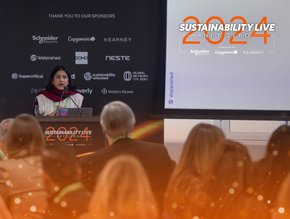NIF Lab Closes in on Goal of Near-Limitless Nuclear Energy

The demand for clean energy generation provoked exciting developments over the years—the development of wind turbines and solar panels to name a couple. However, a lab in the United States is on the verge of a potential breakthrough in clean energy technology that could provide a limitless source of energy for years to come.
Is Nuclear Fusion the Key to Renewable Energy?
The National Ignition Facility (NIF), based in Livermore, California, has been working on a process called inertial confinement fusion (ICF), which is a form of energy fusion research that explores the initiation of nuclear fusion by heating and compressing a fuel target. In this process, 192 beams are directed from the NIF’s laser to a ‘peppercorn-sized’ capsule of deuterium and tritium—both forms of the hydrogen element. This process has the potential to produce temperatures up to 100 million degrees celsius—exceeding the temperature of the sun—resulting in thermonuclear fusion.
For nuclear fusion to take place, the lab has explained that it would need to direct 1.9 megajoules (MJ) from the laser. During an experiment on the 8th of August, it was 70% successful, with a fusion yield of 1.3MJ. ‘This is a huge advance for fusion and for the entire fusion community’s says Debbie Callahan, a Physicist at the Lawrence Livermore National Laboratory (LLNL)—the host of NIF. As a result of this experiment, NIF recorded eight times more yield compared to Spring 2021, and 25 times more than in 2018.
Professor Jeremy Chittenden, Co-Director of the Centre for Inertial Fusion Studies at Imperial College London, says, ‘The pace of improvement in energy output has been rapid, suggesting we may soon reach more energy milestones, such as exceeding the energy input from the lasers used to kick-start the process’.
Is Nuclear Fusion Energy Limitless?
The scientists at NIF believe the process could create a potentially limitless source of clean energy. The facility has now achieved ‘burning plasma’, a process where the fusion reactions provide the necessary level of heat for further fusion, resulting in a continuous, self-sustaining source of energy.
‘Self-sustaining burn is essential to getting high yield’, says Callahan. ‘The burn wave has to propagate into the high-density fuel in order to get a lot of fusion energy out. [...] We believe this experiment is in this regime, although we are still doing analysis and simulations to be sure that we understand the result’.
Kim Budil, Director of the Lawrence Livermore National Laboratory, says, ‘this result is a historic step forward for inertial confinement fusion research, opening a fundamentally new regime for exploration and the advancement of our critical national security missions. It is also a testament to the innovation, ingenuity, commitment and grit of this team and the many researchers in this field over the decades who have steadfastly pursued this goal.
Budil continues, ‘for me it demonstrates one of the most important roles of the national labs – our relentless commitment to tackling the biggest and most important scientific grand challenges and finding solutions where others might be dissuaded by the obstacles’.
The next stage of research will involve repeating the fusion experiment to analyse the reproductive nature of the process, and fine-tuning the variables within nuclear fusion to gain near-limitless clean energy.
For more energy insights, check out the latest issue of Energy Digital Magazine.






